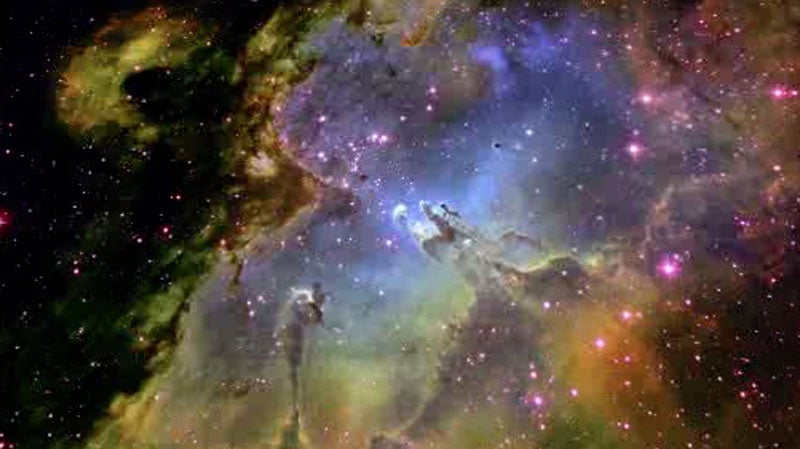The terrestrial analog is looking into a fog bank. What we call “dense fog” is not actually denser; it is just a larger cloud of material — more water droplets suspended in the air along our line of sight obscure our view. And so it is with these types of nebulae. Because we’re looking a half light-year through the pillars, we can see sharp edges and apparently dense structures — even though the material is quite tenuous.
In the Eagle Nebula, the density of material within the columns is about 4,000 particles per cubic centimeter. Air density at sea level has more than 1019 particles per cubic centimeter — that’s a factor of 10 million billion times more dense than in the pillars. The 4,000 particles per cubic centimeter density is far lower than that of the best vacuum we can achieve on Earth. So, it is the vast scales of these nebulae that give them the appearance of solid structures. — Paul Scowen, Arizona State University, Tempe










